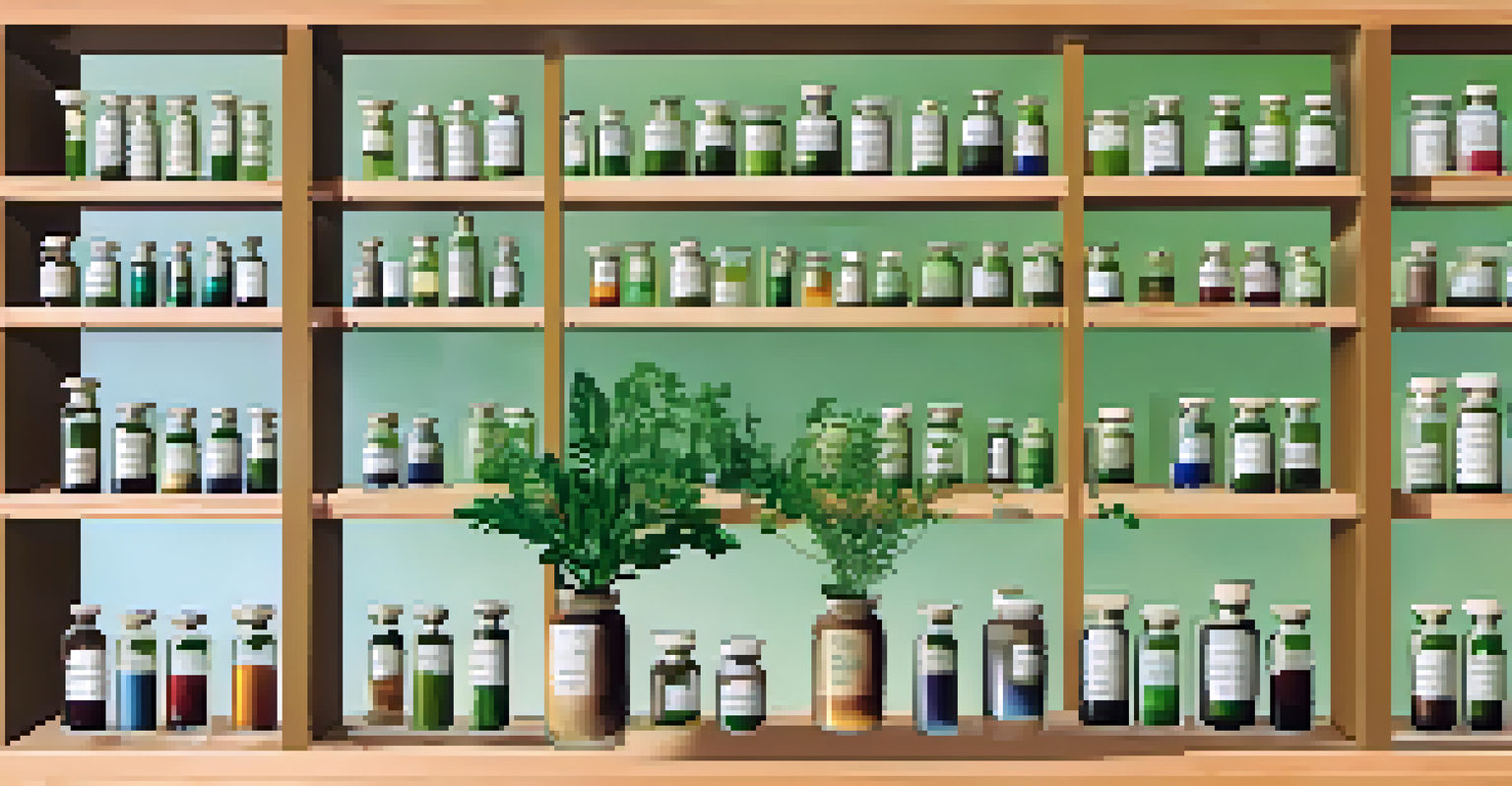The Role of Phytotherapy in Homeopathic Medicine Explained

What is Phytotherapy and Its Importance?
Phytotherapy, often referred to as herbal medicine, utilizes plant-derived substances for therapeutic purposes. This practice has roots in ancient traditions, where various cultures turned to nature for healing. Its importance lies in the ability to harness the natural compounds found in plants, which can aid in the treatment of numerous ailments.
The greatest medicine of all is teaching people how not to need it.
The effectiveness of phytotherapy is backed by both historical usage and modern scientific research. For instance, echinacea is frequently used to boost the immune system, while ginger can soothe digestive issues. This evidence-based approach enhances its credibility and appeal in the realm of natural medicine.
Moreover, phytotherapy serves as a bridge between conventional and alternative medicine, providing a holistic approach to health. It encourages individuals to explore natural options, paving the way for a more integrative understanding of health and wellness.
An Overview of Homeopathic Medicine
Homeopathic medicine is a unique system of treatment that operates on the principle of 'like cures like.' This means that a substance causing symptoms in a healthy person can be used in diluted form to treat similar symptoms in a sick person. Homeopathy emphasizes the individualization of treatment, considering the patient's overall state.

The foundational belief is that the body has an inherent ability to heal itself. Homeopaths aim to stimulate this self-healing process by using highly diluted remedies derived from plants, minerals, and animal sources. This approach contrasts sharply with conventional medicine, which often focuses on symptom suppression.
Phytotherapy Utilizes Nature's Healing
Phytotherapy harnesses plant-derived substances for healing, bridging ancient wisdom with modern science.
Understanding homeopathy requires a shift in perspective; it’s not merely about alleviating symptoms but rather addressing the root cause of health issues. This holistic approach often resonates with those seeking natural and less invasive treatment options.
How Phytotherapy Complements Homeopathy
Phytotherapy and homeopathy can work hand-in-hand, providing a more comprehensive approach to health. While homeopathy focuses on the energetic properties of substances, phytotherapy taps into the biochemical benefits of plants. This complementary relationship allows practitioners to tailor treatments that address both the physical and energetic aspects of health.
Nature itself is the best physician.
For example, a homeopathic remedy like Arsenicum album, known for alleviating anxiety and digestive issues, might be paired with a phytotherapeutic herb like chamomile, which calms the stomach and reduces anxiety. Such combinations can enhance the overall effectiveness of the treatment regimen.
Moreover, both practices share a common goal: to promote healing by supporting the body's natural processes. By integrating phytotherapy into homeopathic treatments, practitioners can offer patients a more rounded approach to their health.
The Synergy of Plant-Based Remedies
The synergy between phytotherapy and homeopathy lies in the use of plant-based remedies that harness the power of nature. Many homeopathic remedies are derived from plants, which means they can be particularly effective when used alongside phytotherapeutic treatments. This synergy can amplify the healing potential of the remedies.
For instance, St. John's Wort is a well-known phytotherapeutic herb used for mood enhancement, while the homeopathic preparation of this herb can address specific emotional imbalances. Together, they can provide a more holistic approach to mental well-being.
Homeopathy Focuses on Individual Healing
Homeopathic medicine operates on 'like cures like,' promoting the body's innate ability to heal through individualized treatment.
By understanding the unique properties of various plants and their homeopathic counterparts, practitioners can create tailored treatment plans that resonate with patients both physically and emotionally.
Safety and Efficacy of Combined Approaches
One of the concerns many have about alternative medicine is safety. However, when phytotherapy and homeopathy are used together, they often present a safe option for patients. Both systems prioritize natural healing methods, which can reduce the likelihood of adverse reactions compared to conventional pharmaceuticals.
It's important, though, for practitioners to be well-informed about each approach to avoid any potential interactions. A thorough understanding of the properties of both phytotherapeutic herbs and homeopathic remedies ensures that patients receive the safest and most effective care.
Furthermore, clinical studies and anecdotal evidence support the efficacy of combining these approaches, making them appealing to those seeking a more natural path to health.
Challenges in Integrating Phytotherapy and Homeopathy
While the integration of phytotherapy and homeopathy holds great promise, it is not without challenges. There can be skepticism from both practitioners and patients who may not fully understand how these systems can work together effectively. This skepticism often stems from a lack of education and awareness about each approach.
Additionally, the field lacks comprehensive research that conclusively demonstrates the benefits of combining these two modalities. More studies are necessary to explore how these treatments can be effectively integrated and to provide solid evidence that supports their combined use.
Synergy Enhances Healing Approaches
Combining phytotherapy and homeopathy offers a comprehensive and holistic approach, addressing both physical and energetic health aspects.
Despite these challenges, the growing interest in natural remedies and holistic health continues to drive exploration in this area, encouraging more practitioners to consider the benefits of integrating phytotherapy with homeopathy.
The Future of Phytotherapy in Homeopathic Medicine
Looking ahead, the future of phytotherapy in homeopathic medicine appears promising. As more individuals seek natural alternatives to conventional treatments, the demand for holistic approaches will likely grow. This trend is encouraging research and innovation in the field.
Furthermore, educational initiatives aimed at both practitioners and patients can help bridge the knowledge gap surrounding these complementary modalities. By fostering awareness, more people can make informed decisions about their health and wellness.

Ultimately, as the understanding of both phytotherapy and homeopathy deepens, we can expect to see more integrated treatment plans that not only enhance patient outcomes but also promote a greater appreciation for the healing power of nature.